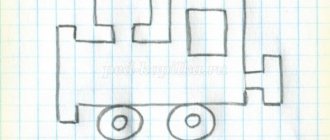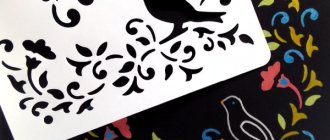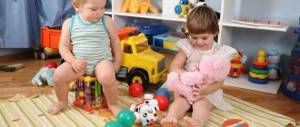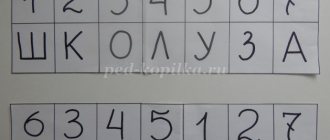Ordinal and quantitative counting: 5 differences
Difference 1: Goals
- Quantitative counting is used when you need to count objects. Those. determine how many there are in total.
- Ordinal counting is used to find out the place of an object, its number in an ordered set.
So, we use quantitative counting to determine the total number of elements in a set, and ordinal counting to find the location of a specific element.
Difference 2: Numerals
For ordinal counting we need ordinal numerals, and for quantitative counting, respectively, cardinal ones. Let us remind you:
- one, two, three, etc. - cardinal numbers (indicate the number of objects);
- first, second, third, etc. - ordinal numbers (indicate the order of an object in a sequence).
Difference 3: Questions
This criterion, which determines the difference between ordinal and quantitative counting, is very easy and convenient to use in practice.
If we can say “how much”, then our account is quantitative, i.e. we want to know “how much in total”:
- How many paws does a kitten have?
- How many bagels are in a bag?
- How many stars are there in the sky?
When we want to determine the location of an object, we ask the question “which” or “which one”. To answer this question, you need to use ordinal counting.
- What floor do we live on?
- What bus will we take to visit grandma?
- What candy are you already eating?
Difference 4: Direction
If we want to determine the quantity, then it does not matter in which direction the items will be counted. Our task is to determine how many there are in total.
To find out the serial number of an item, you need to count in order, in the indicated direction. And if the direction of the count is changed, the result may turn out to be completely different.
Let's look at the picture to understand:
- The SECOND square from the left is red,
- SECOND from the right - blue.
We changed the direction and the result changed. But the number of squares remains the same.
Difference 5: Meaning
- In quantitative counting, the numeral denotes the entire set of objects.
- In ordinal counting, a numeral is used to indicate the location of a specific object and, accordingly, refers only to this object.
Quantitative counting of objects. lesson plan in mathematics (grade 1) on the topic
Lesson “Quantitative counting of objects” (1 hour)
Target settings
Subject: in joint activities with the teacher, learn: count a given number of individual objects from a set of subjects;
estimate the number of items and check the estimates made by counting; count both forward and backward within 10. Metasubject:
regulative - in dialogue with the teacher, accept the educational task (through reading and discussing the topic of the lesson); carry out educational activities under the guidance of the teacher in a practical and mental form (when completing tasks from a textbook, workbook, on the board); record (verbally) at the end of the lesson your satisfaction/dissatisfaction with your work in the lesson;
cognitive - to navigate through the information material of the textbook (through the navigation system: the beginning of the lesson, an explanation of the new material, a sample to complete in the notebook); together with the teacher, search for the necessary information (when working with a textbook (text, illustration)); compare and analyze objects;
communicative - use simple speech means; engage in dialogue with the teacher and peers, in collective discussion; answer teacher's questions.
Personal: understand the essence of the student’s new social role, accept the norms and rules of school life, take math lessons responsibly (be prepared for class every day), take care of the textbook and workbook; show a positive attitude towards the subject “Mathematics”, be aware of its importance;
.
During the classes
Organizing time. Lesson topic message.
Repetition. 1) Consolidation of ideas about the relative position of objects.
The teacher draws the children's attention to the pictures on the typesetting canvas, where images of Pinocchio, Pierrot, Alice the Fox, Basilio the Cat, Artemon, Malvina and Kolobok are displayed.
- Who is the odd one out? (Kolobok.)
- Why? (All the other heroes of the fairy tale “The Adventures of Pinocchio.”)
- Who is standing to the left of Pierrot? To the right of Lisa? Who stands between Kolobok and Artemon? Who is first? Who is last?
Game "Day-Night". (The teacher covers a row of these pictures with a curtain and asks the question: “What has changed?” When answering, children should use the words “before”, “behind”, “right”, “left”, “between”.)
2) Consolidation of ideas about the properties of objects.
- Look at the figures in each pair. Name them and say what has changed: shape, color or size. (On the board there are pairs of geometric figures; the figures in each pair differ in only one attribute.)
Geometric Lotto.
— Make a pattern of geometric lotto figures. Take three mugs: yellow, red and blue. Place them on the desk so that the red circle is at the top, and the yellow circle lies between the red and blue.
Place a red square to the right of the yellow circle and a blue square to the left.
— How many figures did you use? How many laps? How many squares? What more? Less of what?
Counting objects within 10. The teacher reminds children that all objects around can be counted. To do this, use the words: “one”, “two”, “three”, etc.
| Andryushka arranged the toys in two rows. Next to the monkey is a teddy bear, Together with the fox there is a hare with a scythe, Following them are a hedgehog and a frog. How many toys did Andryushka place? (6 toys.) |
- List how you remember what toys Andryushka had? (Children's answers.)
- Guess why he arranged them like that? (Children should notice that it is better to remember toys this way. For example, they can give the following arguments: The monkey and the bear are big, they are the same color. The fox is always chasing the hare, and the hedgehog and the frog are small. There may, of course, be other arguments .)
“Put in front of you as many sticks as I can clap my hands and tap my pencil on the table.”
— Count “to yourself” how many vegetables there are. (The teacher displays one picture of vegetables on the typesetting canvas. There can be 8-9 of them.)
Next, you can ask questions about the relative position of objects: “Which vegetable is to the right of the carrot? To the left of the beets? What picture did I put in front of the cabbage? After the cucumber? Etc. Physical education minute.
- Do 5 squats; 3 tilts to the right, 3 tilts to the left; 10 jumps in place.
- How many times did you squat? leaned over? did you jump? Work according to the textbook. Completing the textbook tasks on p. 10-11.
1) Based on the illustrations for the cartoon about a kid who could count to 10, children must reconstruct the plot of the fairy tale and continue the given sentences like this: “One is a kid. Two is a calf. Three is a cow. Four is a bull. Five is a horse. Six is a pig. Seven is a cat. Eight is a dog. Nine is the ram. Ten is the captain (goose).”
2) Looking at the picture for the fairy tale “Teremok” (p. 11), students make up various questions with the word “how much” and answer them. It is advisable that children use their knowledge of the arrangement of objects in these questions. For example: “How many flowers are there in the flowerbed in front of the tower? How many windows are there at the bottom? How many trees are there to the left of the bear?
3) Task with fish on p. 11 aims to consolidate the skills of counting objects and distinguishing them by color, shape and size. First, it is convenient to compare the fish in pairs in each column, find out how they are similar and how they differ. Then you can make a similar comparison along the lines, where there are already three fish. Here the guys should find out what has changed: color, shape or size.
Games for strengthening ordinal and quantitative counting skills
Game 1: Who's in the house
To conduct a play session, you will need one small toy and 5 boxes of exactly the same size and color, in which this toy can be placed, like in a house.
You can make boxes with your child during creativity classes. Or you can replace them with something suitable - for example, plastic dishes or even sheets of colored paper. By the way, in the latter case, we get even more benefit from the game: we train the little one’s imagination by inviting him to imagine that this simple leaf is a magnificently beautiful house in which his favorite toy lives.
Our task: to show the young accountant what an ordinal account is, why it is needed and how to use it.
- How many houses do we have? Let's do the math. One two three four five! Only 5 houses!
- Are the houses the same or different? They are exactly the same.
- Your toy is hidden in one house. Can you tell me where the toy is without pointing your finger?
- To correctly say which house has a guest, you need to know the location of this house. Let's count: first house, second, third, fourth, fifth.
When calling the boxes an ordinal number, do not forget to accompany the count with an indication of the corresponding “house”.
Having correctly named which house the toy is in, let the baby transfer it to the second, fourth house. Ask him questions again and again:
- How many houses do we have?
- How many toys do we have hidden?
- In which house is the toy?
Game 2. Colored chips
For this lesson you need to prepare 5 identical objects that will differ only in color. What can I use? Yes, whatever:
- clothespins;
- details of a construction set or mosaic;
- cars from the set;
- children's dishes;
- checkboxes;
- circles cut out of thick cardboard - chips.
To prevent the game from getting boring, change the materials at hand. The main thing is to practice ordinal and quantitative counting.
To begin, arrange the items in a line. Now let's begin:
- What is the number of blue chips?
- In the third position is a chip of what color?
- Swap the blue and red chips. What positions did they begin to occupy in our ranks?
- Collect the chips in a box, and now lay them out like this: the first is green, the second is red, the third is blue...
Change tasks so that your child gets comfortable with the concept of ordinal counting. Do not forget to periodically remind how many chips are involved in the game.
To avoid confusion with positions, you can use cards with numbers, saying that each number indicates the number of the chip and its place in the row. Like chairs in a theater, like houses on the street or apartments in a house...
Game 3. Gift for Dunno
Prepare 5 identical flowers. They can be drawn on paper, made using the origami technique, made into applique - it doesn’t matter. It is important that a small square is placed near the flower - a gift for Dunno.
The purpose of this game is to clearly demonstrate that when counting ordinal, it is important how you count.
Go:
- Grandmother sent Dunno a telegram in which she wrote that she had hidden a gift for him in the clearing under the third flower. But the little man can’t find him.
Show how Dunno “counts” flowers, deliberately naming places incorrectly, starting counting from the wrong side or counting out of order.
- What is the problem? Was grandma joking?
The child must learn that ordinal counting must clearly indicate the object. By changing the direction of the count, we get a different position, a different object, we do not find the gift.
Play with the flowers, counting them from right to left, then from left to right. Now let’s count how many flowers there are. If we remove one, which flower disappeared? How many of them are left in the clearing? And if we plant another flower between the third and fourth, what will change? Which flower is now in fifth place? Where is the flower on the far right?
Do-it-yourself didactic manual for teaching numeracy in kindergarten
Do-it-yourself didactic mathematical manual for preschoolers
Master class on the production of the didactic manual “Fun Counting” for individual work with preschoolers
Author : Natalya Evgenievna Khokhlova Position: teacher-defectologist Place of work: MKDOU No. 22, Miass, Chelyabinsk region Description: master class on the production of the didactic manual “Fun Counting” for individual work with preschoolers on the formation of elementary mathematical concepts. Purpose of the material: for preschool teachers and caring parents. Goal: Production of a didactic manual “Funny Counting” for individual work with preschoolers. Objectives: - learn to create teaching aids with your own hands; - develop creativity. One of the main areas of preschool education is mathematics. “A child’s element is play,” so the main principle is to teach while playing. Teaching mathematics in a playful way develops and shapes the child’s cognitive interest. To make the teaching aid “Merry Counting” we will need materials: White cardboard; Scissors; Glue; Adhesive tape.
And so do the pictures. I made a blank from pictures taken from the Internet and printed them on a color printer. I fit 4 rows of pictures on one A4 sheet. Dimensions of one row: height 4.5 cm, width (length) 28 cm. Each row contains 10 pictures. I will be happy to share my preparations with you. We cut the printed blanks into strips along the lines.
We make the same blanks (strips) from cardboard measuring 4.5 cm * 28 cm). And in addition to each workpiece, we will need two small strips measuring 0.7 cm * 28 cm.
Next, use glue to glue our row of pictures onto the cardboard blank.
If you have a sufficient number of pictures, from magazines, unnecessary books, then you can cut them out and paste them on cardboard, then you don’t need to print the pictures. Next we need a self-adhesive film, which can be of any color. Cut a strip of self-adhesive a little wider than our narrowest strip.
We glue a narrow cardboard strip along the very edge of the self-adhesive, leaving the adhesive part of the film open.
Then we take our wide strip with the picture pasted on it and place it face down, aligning the edges of the narrow and wide strips, also leaving the adhesive edge of the film open.
After the edges of the strips are aligned, we bend the adhesive edge of the film, thereby gluing the narrow and wide strips, turn it over and see what we got.
We process the second edge of the wide strip in the same way. Next, we cover with self-adhesive film the edge of the wide strip where the counting of objects will begin.
Cut a small strip of cardboard or any paper. Size height 4.5 cm, width 0.7 cm.
We put this strip under our sides
And glue a strip of self-adhesive film of the same size on top.
This needs to be done in such a way that we can insert a “slide” strip on this side of the card. Now our card does not look very aesthetically pleasing due to the fact that the narrow strips along the edge of the card do not fit tightly to the base and are puffy. All this can be corrected after all the cards are ready by placing them under a press.
Next, cut out the “engine” strip from the cardboard. It should be a couple of millimeters smaller in height than the manufactured card, and a couple of centimeters longer in length.
We insert the “engine” strip into the manufactured card and the card is completely ready.
I use the didactic manual “Fun Counting”, made with my own hands, in individual work with children on the formation of elementary mathematical concepts, such as quantity and counting. This manual helps solve the following problems: - consolidate quantitative and ordinal counting; - exercise children in counting objects; — secure direct and reverse counting; When working in a compensatory kindergarten, great attention has to be paid not only to the development of mental processes, but also to the development of speech. That’s why I try to select multifunctional aids. Also, working with this manual helps children learn to coordinate numerals with nouns in gender, number, case, and enrich their speech with nouns and adjectives. For example: one pan, two pans, three pans, four pans, five pans;
Or the use of the words one-one-one, two-two; One apple – two apples, etc.; You can count using an adjective - one green apple, etc.
Cards can be made using pictures corresponding to the lexical topic of the week.
If desired, you can make the required number of cards to work with the subgroup. I hope that this teaching aid will be a good help to you and your children. I wish you creative success!
We recommend watching:
Do-it-yourself multifunctional game aid for preschoolers Do-it-yourself didactic aid for younger preschoolers Do-it-yourself didactic aid for kindergarten Do-it-yourself didactic aid “Paired Pictures” for kindergarten
Similar articles:
Game layout for children 4-7 years old “My City”
Multifunctional teaching aid for children 5-6-7 years old
Do-it-yourself manual for developing fine motor skills
Eureka Tips:
- You can tell children under four years old that counting helps us find out the number of objects and find the location of these objects. But you shouldn’t wait for the correct use of ordinal and cardinal numbers in early preschool age.
- If a child makes a mistake by naming the wrong number when counting, gently correct him every time it does not distract from other developmental tasks of your lesson with your preschooler.
- Remind your child that we use “one, two, three” counting when we want to find out HOW MANY objects there are. When we are looking for WHAT one in a row, we count “first, second, third.”
- Use the given descriptions of games as a sample, feel free to change the conditions, main characters and didactic materials. Let your imagination run wild while enjoying pedagogical creativity and rewarding interactions with your favorite preschooler.
Happy parenting to you! See you again!








